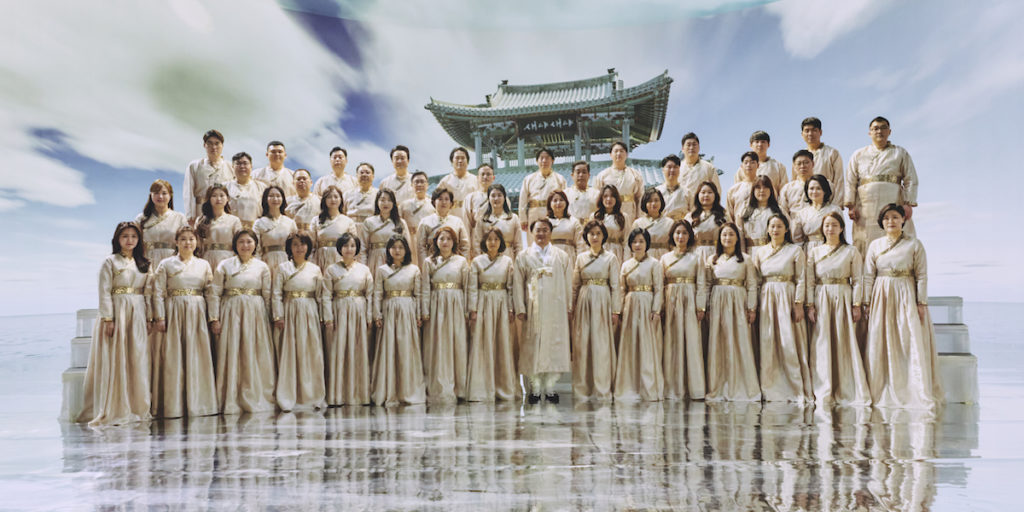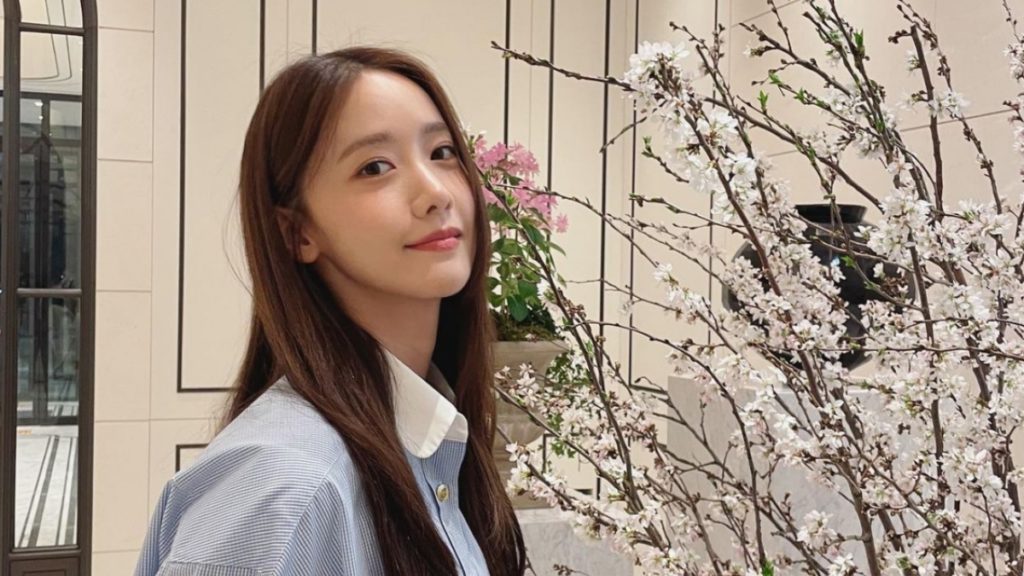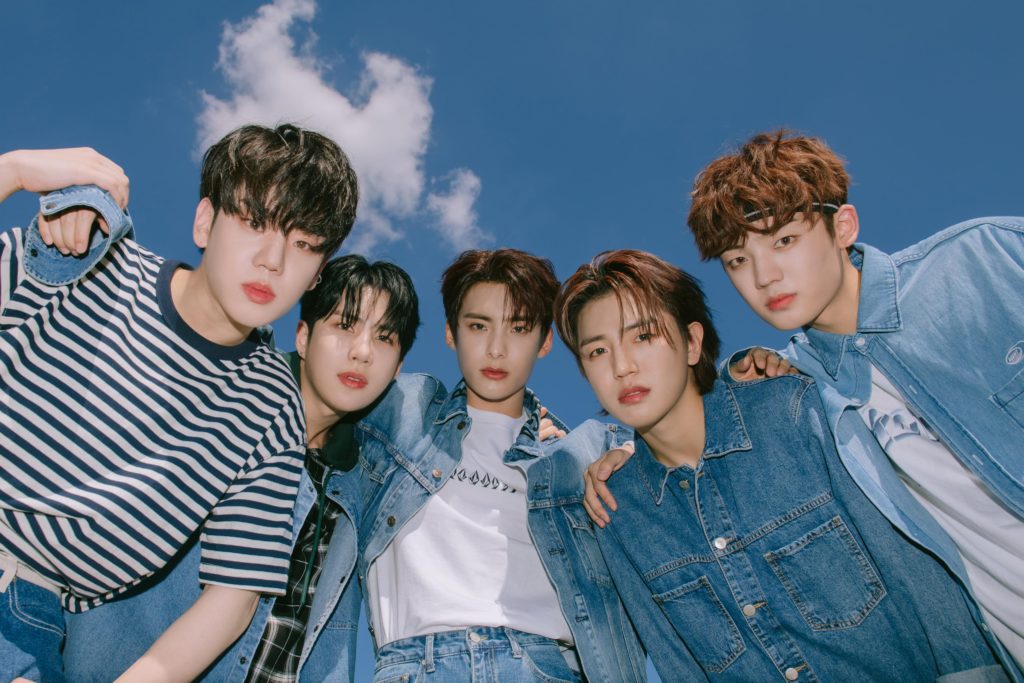The Prestigious National Chorus of Korea Releases Their New Album Voices of Solace

On June 21, the National Chorus of Korea (NCK) released their new album Voices of Solace. The 11-track album features a mixture of choral music and traditional Korean songs, including the focus single, “새야 새야 (Saeya Saeya).” This collection from the accomplished choral group is mostly sung acapella, with the occasional introduction of other instruments to further support their vocals. As the first solo album from The National Chorus of Korea available on Spotify, Voices of Solace celebrates Korean culture, storytelling, and the power of voices through music.
Introducing the National Chorus of Korea
Founded in 1973, the National Chorus of Korea is South Korea’s first professional chorus. The group, led by the 11th Artistic Director Euijoong Yoon, “pursue[s] the professional and artistic aspects of choral singing.” They have also “developed new Korean choral works that express distinct vocal and musical styles portraying many of the special characteristics of Korean culture,” which the group demonstrates through Voices of Solace. The National Chorus of Korea became an independent art organization under the Ministry of Culture, Sports and Tourism in 2000.
Over the course of their history, this prestigious chorus has performed a diverse repertoire in subscription concerts (their five annual regular concerts), projects concerts (with the mission of strengthening education of choral music), provincial concerts, and guest appearances. The National Chorus of Korea has also performed jointly with other highly-regarded performing arts groups in Korea, including the National Opera of Korea, the National Ballet, the Korea Symphony Orchestra, and the Seoul Philharmonic Orchestra. In addition, the NCK have been invited to perform at international music events such as the seventh World Choral Symposium in Kyoto in 2005, the 2006 World Cup Germany concert, and the Saarland International Music Festival.

Past concerts include a variety of works by Western classical masters like Mozart’s “Requiem in D minor K.626” and an annual performance of Handel’s Messiah. The NCK also held concerts focused on Korean music, including the National Liberation Anniversary Concert and choral competitions in Korea. As a part of their annual concerts program, the NCK’s “Voice of Korea” performance took place on Thursday, June 30 at the Lotte Concert Hall. This Korean Creative Chorus Night marked the choral group’s 190th regular concert.
Natural Beauty and a Story of Flight
The focus single of Voices of Solace, “새야 새야 (Saeya Saeya),” and its special music video celebrates the beauty of Korean culture. The track itself is a traditional song, also known as “Bird, Bird, Bird, Bird,” that has been reinterpreted by composer Oh Byunghee. “새야 새야 (Saeya Saeya)” was popularized during the Donghak Peasant Revolution in 1894, which sparked the first Sino-Japanese War. This song, according to legend, came to be following Korean general Jeon Bong-joon’s failed uprising against Japanese colonizers and corrupt officials. General Jeon is akin to a Korean Robin Hood, and the tragedy of this rebellion was passed down from generation to generation as a lullaby. This history seeps into the song itself.
Tinted with lamentation, “새야 새야 (Saeya Saeya)” builds layers of emotions, starting with the powerful declaration of “bird bird.” This acapella harmony transitions into softness, causing listeners to lean in to hear the NCK’s voices, while a steady drumbeat reverently keeps time. “새야 새야 (Saeya Saeya)” reaches the peak of its flight, as all of the voices crescendo towards a final resounding and unified chord. A daegeum is the sole instrument supporting the tenor solo, the flute-like instrument echoing each musical phrase. The drum returns when the full chorus launches into the last minute of the song, ending the dynamic “새야 새야 (Saeya Saeya)” with a gentle landing of hums from the women and a softly sustained “saeya” from the men.
The National Chorus of Korea released the music video teaser on their YouTube channel on June 20, a day ahead of their Voices of Solace album. The music video for “새야 새야 (Saeya Saeya)” dropped four days later and highlighted the journey of birds, crisp landscapes, and flowing outfits of both the dancer in the video and the traditional hanbok worn by the choral group. Shots of the rising sun, birds flying across the sky, and the ocean reflecting the colors of the sunrise are mixed with scenes of the choir singing, fluid camerawork painting these moments with lightness.
Soaring Voices of Solace
The celebration of Korean musical traditions and its singers, through the selection of “새야 새야 (Saeya Saeya)” and inclusion of Korean instruments, carries into the rest of Voices of Solace. The National Chorus of Korea truly has “Many Voices, One Sound” throughout their 11 tracks, which range from two to seven and a half minutes. Voices of Solace features compositions by Lee Youngjo, Woo Hyowon, Oh Byunghee (who composed “새야 새야 [Saeya Saeya]”), and Cho Hyeyoung.
The album opens with “Eo-gi-young-cha,” a track that begins with determined high notes and an almost frantic crescendo. “Eorang” follows the pure adrenaline “Eo-gi-young-cha.” The quietly sustained notes of the sopranos and altos blend together to create a steady strength that grows over the five-minute piece. Voices of Solace’s center is marked by the four tracks of the “Eoi gari” series, beginning “Eoi gari – Neohwaneo.” An intro spotlighting the haegeum leads into the soprano solo, the crystal clear notes piercing the silence. “Eoi gari – Eoi gari, Neomcha (Over)” continues the thread of a sustained note but creates contrast with the ending pitch of “Eoi gari – Neohwaneo” by beginning with all voices singing at a lower starting note. The even tempo of the piece and the steady rise and fall of voices develops a haunting effect. There is a solemnness and inexplicable sorrow in the pure sound found in “Eoi gari – Eoi gari, Neomcha (Over),” and it resonates far beyond its six and a half minutes.

“Eoi gari – Eoneo Eoneo (Ajaeng solo)” is an interlude of sorts and the only song dedicated to an instrumental solo. The strings of the Korean zither bend and wail in a dynamic pattern, bursting with energy at unexpected times. The last piece of the “Eoi gari” series is “Eoi gari – Eoi gari, Arirang,” which focuses on three soloists. The tenor and two sopranos are then supported by the rest of the chorus. “Eoi gari – Eoi gari, Arirang” possesses a haunting atmosphere similar to that of “Eoi gari – Eoi gari, Neomcha (Over),” but there is a greater hopeful lift to the former’s composition.
That hopefulness is nowhere to be found in “Starvation.” There is dissonance from the get-go, and while the notes sung resolve slightly, the NCK always goes back to tension. On top of this, the slow and elongated notes further draw out the dissonance. The introduction of a solo takes the spotlight afterwards, and “Starvation” closes with the striking of a bell, which resonates over the voices of the chorus. Listeners are left with a distinct feeling: this bell seems to be calling to something, but to what exactly is unclear.
Like “새야 새야 (Saeya Saeya),” “Arirang” is a Korean folk song, although the word does not actually mean anything. Instead, “arirang” is a sentiment “generally implying the cultural sensibilities of longing and suffering.” As a song about and for the everyday person, “Arirang” is a landing place for those who are tired with a full bass solo and flowing composition. The theme of a journey continues with “Living in Cheongsan,” another traditional song. Cheongsan refers to the small island located south of the Korean mainland and in between Jeju Island. Simple lyrics and the various paths each voice takes throughout come to intersect and grow with another, painting an image of memories.
The last track—besides “새야 새야 (Saeya Saeya),” which concludes the album—”Island Baby” especially focuses on the women in the choral group. A trying day ends with these woven voices, a clear soprano rising above the rest at key moments. Through these 11 songs, the National Chorus of Korea goes on an emotional journey, relaying these layers through a blend of Korean musical traditions with those of a more Western style. Above all, the hour-long Voices of Solace is an album where listeners can find rest, find comfort, and find peace.
Listen to Voices of Solace on Spotify. Plus, learn more about The National Chorus of Korea on their website, and connect with them on Facebook, Instagram, and YouTube.
Want more album reviews? Check out EnVi’s article on Jimmy Brown’s first studio album, love, here!



